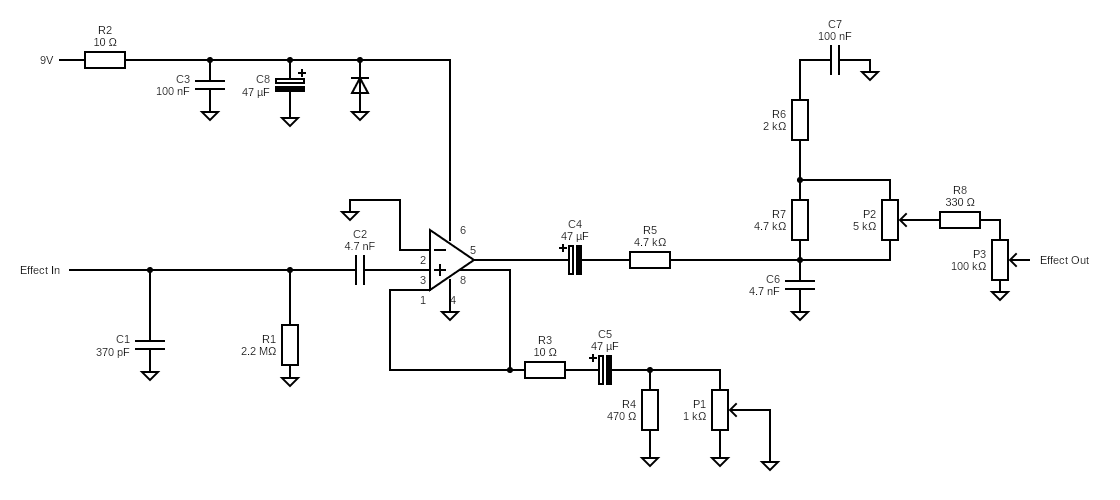Let’s build a Purple Plexi by Lovepedal!
Lovepedal’s Purple Plexi is designed to sound like an old Marshall guitar amp from the 60’s, 70’s, with a little bit of 80’s thrown in there for good measure. The “Plexi” name comes from the nickname of a line of Marshall amps that used Plexiglas panels. There’s a lot of history to these amps and their sound, more than what I’m going to go into for a guitar pedal build report. If you want to know more about Marshall Plexi amp, check out this Guitar World article.
The Purple Plexi pedal, just like the old Marshall amplifier, offers a lot of crunch as things get cranked up. On the high end of the gain control, the Purple Plexi is designed to be heavily distorted. However, by adjusting the guitar’s volume, you can get some cleaner tones as well that still have a Marshall vibe to them. Being a pedal that gives a Marshall sound, there’s some mud to the tone, but in a good way. The Purple Plexi is more than just distortion, it’s a pre-amp that does a lot as you play with it.
While not as simple as some of my recommended beginner guitar pedal builds, the Purple Plexi isn’t too complex and probably good to tackle as your 3rd or 4th build.
Purple Plexi Wiring Schematic
Here’s the schematic for the Purple Plexi.
Click on the schematic to enlarge it.
And here’s the bill of materials.
| Notes | ||
|---|---|---|
| R1 | 2M2 | |
| R2 | 10R | |
| R3 | 10R | |
| R4 | 470R | |
| R5 | 4k7 | |
| R6 | 2K | |
| R7 | 4k7 | |
| R8 | 330R | |
| C1 | 370p | |
| C2 | 4n7F | |
| C3 | 100nF | |
| C4 | 47uF | |
| C5 | 47uF | |
| C6 | 4n7F | |
| C7 | 100nF | |
| C8 | 47uF | |
| IC | LM386 | |
| D1 | BAT46 | Reverse polarity protection. |
| P1 | 1K Lin | Gain potentiometer |
| P2 | 5K Lin | Tone potentiometer |
| P3 | 100K Log | Volume potentiometer |
| Jacks, power supply, etc. | Don't Forget | The stuff you usually use. |
The Purple Plexi uses a super simple gain circuit to really crank the noise. Seriously it’s just a matter “making op-amp go loud.” Obviously there’s always more to it than that. Selecting the right op-amp is key for things like this, and getting the component values right requires quite a bit of know how.
Part of this component selection is getting those typical Marshall amplifier tones. Marshalls are known for being a little heavy on the bass, and putting the right filters in there is key. It may be difficult to see, but R7 and the tone pot work in parallel (as well as with R6) to create a low pass filter with C7. It has some slight fanciness when compared to a basic filter, but the presence of R7 and R6 ensure a minimum amount of resistance and therefor a minimal amount of filtering. It’s pretty cool!
If you’re looking to change some stuff up, feel free to experiment with:
- Change up the operational amplifier. Tagboard Effects with the JRC 386, but try other op-amps with the same pin configuration. Take a look at my experience with the build towards the end, as there were some minor problems with oscillation; some op-amps may be unpredictable.
- Remove R6 and R7 if you want to change the minimal cutoff frequency. This will allow a little more treble to come through and take away some the Marshall vibes.
Lovepedal Purple Plexi Stripboard Layout
As mentioned, I’m putting the Purple Plexi as a beginner build, however, I wouldn’t suggest making it your first build, but maybe your third or fourth. I say this because while it’s not a super crowded build, it’s more crowded than some pedal builds. Mistakes can be made.
I like to present strip board layouts with both the component numbers listed (as per the above schematic) and with just the component values. This way you’re welcome to just make the pedal as is or, if you want to make modifications, you can make modifications. Your call!
Here it is.
Click on the diagram to enlarge it.
My Experience Building The Purple Plexi
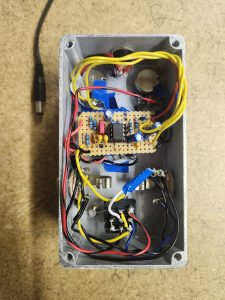
This was one of those pedal builds where everything went wrong. It was a total pain in the ass and, while I really like the pedal, I’m kind of glad the build is over. Perhaps this was just a cursed build.
Honestly this build shouldn’t have been as difficult as it was, I think I just got some bad luck and also got a bit lazy in places.
The main challenges I had was a poor solder joint for the ground wire; in fixing it, I managed to damage the copper on the strip board and had to create a bridge with solder to make sure the signal came though. From there, my pedal tester decided to break because I don’t treat it right. This had me trying to understand why sound was cutting in and out even though it was a loose wire in the tester itself (the tester is an old build and hardly my best work, so, yeah…).
Once those initial problems were solved, I tore my hair out trying to understand why the sound was coming through so quietly. I did my usual pedal debugging, and couldn’t figure out why things just got quiet after R5. The solder was clean and good, and everything around it looked good. I eventually found some sound come through when adjusting the tone knob for some reason; it turned out I soldered the Tone 2 into the wrong row and it was acting like volume control. With that fixed, I got myself a working pedal! Or so I thought…
I boxed the thing up again again, no sound! This was really confusing as I was getting absolutely no signal anywhere. It turns out that the tone knob was the problem (again). After unboxing everything (again), I managed to isolate a short to the tone knob, which had a wire touching the enclosure, causing a large amount of resistance and completely sucking the signal. As a precaution, I used an abundance of tape around the the pots, but all the removing and reinstalling of things created a fairly ugly build because I had to keep re-soldering and connecting things. If this build was for anybody other than myself, I would have had to start again.
How Does The Purple Plexi Sound?
Firstly, I want to be clear that this is the sound of my Purple Plexi clone. It may sound different from Lovepedal’s version. I say this because, while the pedal sounds great, it wasn’t without its problems.
Let’s start with the problems. When testing out of the box, on the very top end of the gain (the last 5-10%), a squeal comes through in this pedal. I went through everything and couldn’t solve the problem. However, looking through some comments from other people who have made a similar build of the Purple Plexi, they had a similar problem with some power adapters. I’ve had problems in the past with store bought pedals and noise coming through by Boss power supply; this could just be a symptom of the the electricity where I live. So, instead of trying to fix the squeal problem, I decided it was a power supply problem. I may be able to fix this with a different op-amp or maybe changing the value of C5.
The lucky part though is that the squeal went away once the box was closed. There’s still a little bit of noise, but it’s a lot better. The trade off here is that I’ve lost some volume in the pedal; from my experience with a short when boxing the pedal, there may be a minor short adding some resistance to the circuit, bringing down the total volume. But I’m classifying this as a “cursed build” and I’m going to live with the lower volume because the pedal sounds rad otherwise.
Beyond that, this Purple Plexi build turned out great! It’s pretty much what was described: some great crunchy gain at higher settings with quite a bit of rollback with the adjustment of the guitar’s volume knob. It’s a versatile pedal and it really pays off to play around with it rather than just cranking everything up and hoping for the best. Lower gain settings still have plenty of sustain and just enough distortion to be interesting, but if you really want some grunt, crank it up!
With that, there’s quite a bit of versatility with the tone knob. I like those classic Marshall sounds, but it’s also nice to give it a little bit more treble. I haven’t tried it yet, but I’d like to run this through a treble booster, as was often the case with early British rock that used Marshall amps.
How The Purple Plexi Turned Out
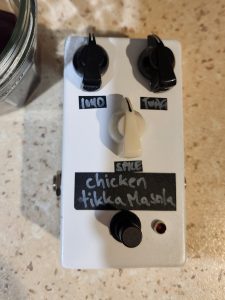 As mentioned, my build of the Purple Plexi was a bit of a head ache, but I eventually got a working pedal out of it. This thing was frustrating to make, not because of the circuit, but because of bad luck and hubris. The pedal is a little bit noisy when nothing is being played but I’m going to live with it because I have the same problem with high gain store bought pedals; it’s not a problem with the pedal, it’s likely a problem with the mains power to my house, my power adapter, and my amp. I need to update some of my equipment!
As mentioned, my build of the Purple Plexi was a bit of a head ache, but I eventually got a working pedal out of it. This thing was frustrating to make, not because of the circuit, but because of bad luck and hubris. The pedal is a little bit noisy when nothing is being played but I’m going to live with it because I have the same problem with high gain store bought pedals; it’s not a problem with the pedal, it’s likely a problem with the mains power to my house, my power adapter, and my amp. I need to update some of my equipment!
Other than that, my Purple Plexi clone turned out really well. I love the sound and it’s quite dynamic. I’ve decided to name this one the Chicken Tikka Masala, because it’s surprisingly British. I like it!
I’ll have a video up soon so you can hear it yourself.
Related posts:
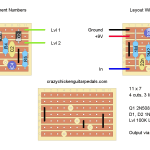 Lovepedal Champ On Stripboard
Lovepedal Champ On Stripboard
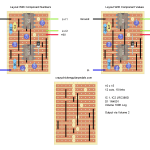 EarthQuaker Devices Acapulco Gold On Stripboard
EarthQuaker Devices Acapulco Gold On Stripboard
 Escobedo Harmonic Jerculator On Stripboard
Escobedo Harmonic Jerculator On Stripboard
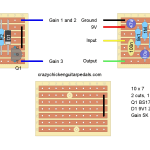 ZVEX Super Hard On On Stripboard
ZVEX Super Hard On On Stripboard
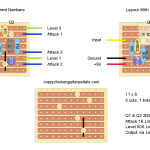 Vox Tone Bender On Stripboard
Vox Tone Bender On Stripboard
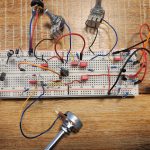 Building And Modding A Tube Screamer On A Breadboard
Building And Modding A Tube Screamer On A Breadboard
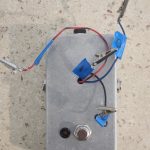 How To Make A Guitar Pedal Tester And Audio Probe
How To Make A Guitar Pedal Tester And Audio Probe
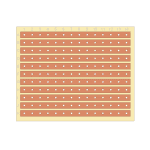 What Is Stripboard And How Do You Read Layouts?
What Is Stripboard And How Do You Read Layouts?
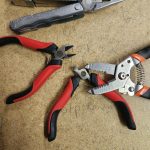 Should I Make Guitar Pedals On Stripboard Or PCBs?
Should I Make Guitar Pedals On Stripboard Or PCBs?
 What’s The Difference Between Overdrive, Distortion, And Fuzz?
What’s The Difference Between Overdrive, Distortion, And Fuzz?
